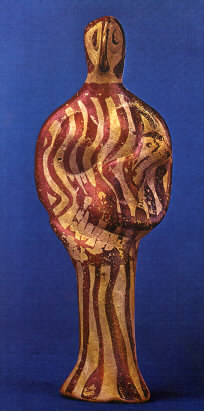


Book Summary
According to Helen is an attempt to see the Iliad by Homer from another
angle. For all of the uproar Helen may have caused on account of her
notorious beauty, we learn very little about her as a human being when we
read Homer's classic.  I consulted other ancient stories about Helen and
the Trojan War in Hesiod's works and The Epic Cycle, part of the
Cyprian, a succession of narrative fragments pieced together to complete
the story of the Trojan War. I also consulted Martin West's, The Hesiodic
Catalogue of Women, Robert Graves' The Greek Myths and Michael Wood's In
search of the Trojan War, and with my research in primitive religion and
anthropological observations I came up with an interesting alternative.
There were many differing, even contradictory tales, so I had options from
which to weave a plot. A more complete discussion of my sources exists in
'Author's Notes' in the back of the book.
I consulted other ancient stories about Helen and
the Trojan War in Hesiod's works and The Epic Cycle, part of the
Cyprian, a succession of narrative fragments pieced together to complete
the story of the Trojan War. I also consulted Martin West's, The Hesiodic
Catalogue of Women, Robert Graves' The Greek Myths and Michael Wood's In
search of the Trojan War, and with my research in primitive religion and
anthropological observations I came up with an interesting alternative.
There were many differing, even contradictory tales, so I had options from
which to weave a plot. A more complete discussion of my sources exists in
'Author's Notes' in the back of the book.
Over all of this I superimposed the archaeological theory of a strong matriarchal society existing in the Mycenaean Age, as it did all over Europe at the time. According To Helen is set within that society. Goddess worship is the age old religion honoring the nurturing of seeds and fecundity of the earth. The female's powers of birth giving seemed magical in olden times, and many rituals still honored her powers of creation. There are many goddesses in this society.